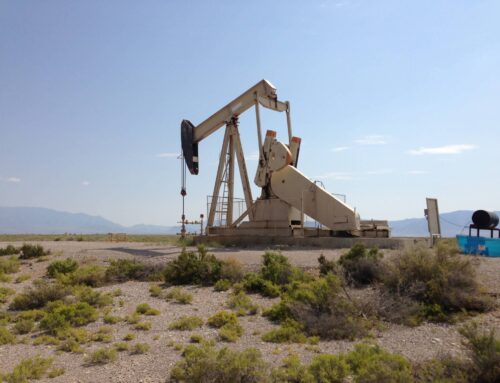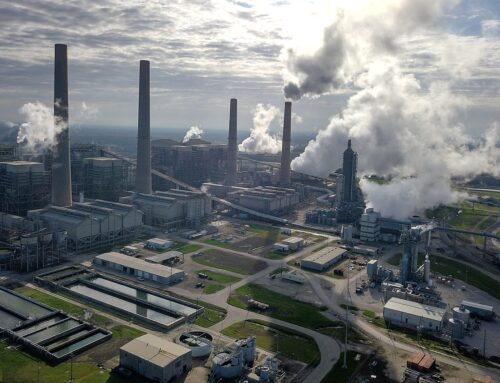View/Download this article in PDF format.
The Department of Energy (DOE) is asking Congress to provide $452 million in taxpayer subsidies to help license up to two experimental small modular nuclear reactors (SMR) over the next 10-15 years. The funding commitment requires taxpayers to fork over up to 50% of project costs.
SMRs in Brief:
- A fraction of the size of conventional-scale reactors, SMRs are intended to be manufactured by assembly line and transported by truck, ship, or rail to their destinations. Where a typical commercial-scale reactor would produce 1,000 MWe or more, SMRs are intended to produce 300 MWe or less.
- There are no reliable cost estimates for SMRs. While commercial scale reactors of 1,000 MWe or greater typically cost at least $8 billion, DOE officials have projected that the first SMRs will cost approximately $1 billion per 100-150 MWe.
- Federal support for SMRs can be traced back to the 1950s. Since then, interest in using SMRs within the military and for domestic energy applications has grown. From 1999 to 2004, DOE’s Nuclear Energy Research Initiative awarded research and development grants to public, private, and non-profit entities in support of SMR development. Before DOE’s Small Modular Reactor Program was first funded in 2012, SMR technology was studied and researched through the Nuclear Energy Technologies and Generation IV R&D programs.
- There are two federal initiatives that currently provide support for the commercialization of SMRs: the recently created DOE Small Modular Reactor Program (which consists of two licensing support programs and advanced research and development (R&D) concepts) and the public-private partnership program at DOE’s Savannah River site in South Carolina.
- In November 2012, DOE selected Babcock & Wilcox’s 180 MWe SMR design and its utility partner, the Tennessee Valley Authority as the first applicant to be awarded cost-share funding. DOE announced that Babcock & Wilcox would be awarded at least $150 million over the lifetime of the program. Yet, the award amount could reach the full $226 million—dependent on Congressional appropriations.
- In March 2013, a second solicitation for $226 million in cost-share was announced by DOE to support the design certification of one additional SMR design by 2025—plus or minus two years. While the second solicitation aims to support the licensing of one additional SMR design, it does not require the SMR developer to have a utility partner in order to construct and operate the design. In response to the second funding opportunity announcement, all three of the SMR developers that did not get selected under the first solicitation reapplied. A fourth company, Hybrid Power Technologies, also applied.
- From 2011 to 2012 alone, nearly $100 million in federal funds have gone out the door through DOE’s Small Modular Reactor Program (See Table 1 below).
| Table 1: DOE Small Modular Reactor Program Funding (millions) | ||||
|---|---|---|---|---|
| Sub-Program: | FY2011 (ACTUAL) | FY2012 (ACTUAL) | FY2013 (ENACTED) | FY2014* |
| Licensing Support | – | 67 | 67.410 | 70 |
| Advanced R&D | 3.105 | 24.529 | ~24.529 | 20 |
| TOTAL SMR Program | $3.105 | $91.529 | $91.939 | $90 |
| Source: Consolidated and Further Continuing Appropriations Act, 2013 (P.L. 113-6) & Congressional Budget Requests *Requested **Final appropriations have yet to be determined. |
||||
- In March 2012, three Memorandums of Agreement (MOA) for public-private partnerships were signed between the Department of Energy’s Savannah River site, Savannah River National Laboratory (SRS), and three small modular reactor developers to commercialize SMR technologies. Located in South Carolina, DOE’s SRS provides support ranging from technology demonstration to licensing assistance. This support is in addition to the SMR program.
- The Nuclear Regulatory Commission has yet to determine if the proposed qualities of SMRs such as generation capacity, modularity, and security features are covered under the current licensing process.
- Within Table 2 below you will find brief information on the six companies currently receiving or actively seeking federal support to commercialize SMR technologies. Today, all but one of the six companies are in the pre-application phase with NRC working towards initial design certification.
| Table 2: Active Small Modular Reactor Projects at the Department of Energy | |||||||
|---|---|---|---|---|---|---|---|
| Company Name | Reactor Capacity (MWe) | Reactor Type | DOE Licensing Technical Support: 1st Solicitation Applicant | 1st Solicitation Recipient* | DOE Licensing Technical Support: 2nd Solicitation Applicant | Savannah River Site Partnership Recipient | Location |
| Westinghouse Electric Company | 225 | iPWR | X | X | Ameren Power’s Callaway Site, MO | ||
| The Babcock & Wilcox Company | 180 | iPWR | X | X | Tennessee Valley Authority’s Clinch River Site, TN | ||
| Holtec International Incorporated | 145 | iPWR | X | X | X | Department of Energy Savannah River Site, SC | |
| Fluor Power Corporation | 45 | iPWR | X | X | X | Department of Energy Savannah River Site, SC | |
| Gen4 Energy | 25 | FNR | X | Department of Energy Savannah River Site, SC | |||
| Hybrid Power Technologies | 300 | Hybrid | X | Kansas City, KS | |||
| *Announced in November 2012 | |||||||
Continued taxpayer support for licensing small modular reactors in addition to R&D giveaways amounts to just one more subsidy in a suite of federal supports for the nuclear industry. In the Department of Energy’s materials on SMRs, the agency argues that there is a “need and a market” in the United States for small modular reactors. There are 100 reactors in the United States today operated by 30 companies; the nuclear industry, not federal taxpayers, must lead the way if small modular reactors are to reach commercial viability.
For more information, please contact Autumn Hanna at (202) 546-8500 x112 or autumn@taxpayer.net











Get Social